the enchanted underwater forest
Words by Sadiyah Rawat & photos by Lisa Beasley
Kelp forests are one of the most beautiful underwater landscapes. These sea forests are home to a large diversity of marine life, from otters and seals, to sharks and whales and thousands of other little ocean critters. Kelp forests are also a blue carbon ecosystem, they play an important role in mitigating the effects of climate change. However, these ecosystems are also threatened by increased ocean warming.
Here is all you need to know about kelp forests: what they are, why are they important, the role they play in fighting the climate crisis and the joys of kelp forest diving. The eerie beauty of this underwater fairyland will take your breath away.
Let’s dive in.
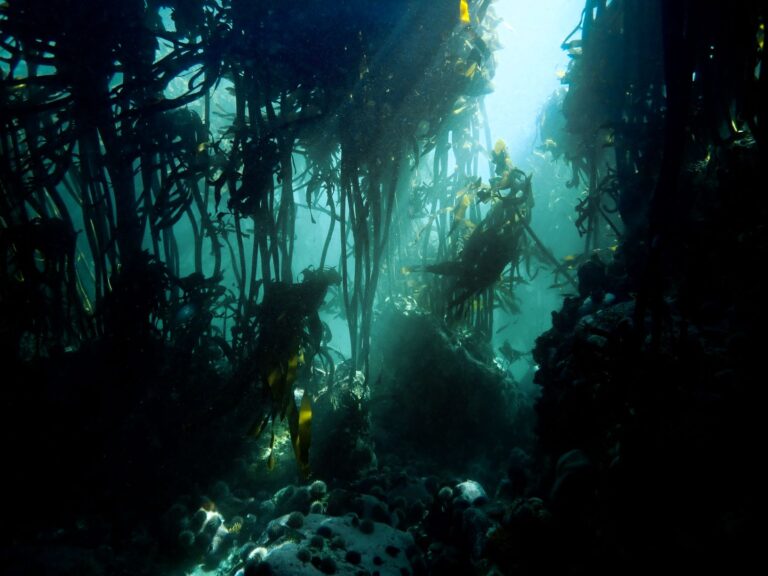
Kelp Forests – What are they and why are they important
Kelp forests are an incredibly diverse and highly productive ecosystem. They occupy 43% of the world’s marine ecoregions and 25% of rocky shorelines. Kelps are a globally important species that contribute disproportionately to marine biodiversity. This is because kelps are foundation species, i.e., they provide a substrate for the marine life inhabiting these underwater forests. Kelps break up the water column into an array of microhabitats, providing safe refuge to a variety of small creatures. These nutrient rich habitats also serve as feeding and breeding grounds for many species. Without the kelps, these ecoregions will collapse as there will no longer be any structure to these ecosystems.
You can find this underwater rainforest close to shore at relatively shallow depths. Kelp forests are rarely found beyond depths of 40m as they are dependent on light for photosynthesis. They thrive in temperate regions and nutrient rich waters hence are usually found in upwelling regions (where cool, nutrient rich deep water comes to the surface). Kelp forests can be found off the West Coast of South Africa, the South Eastern Coast of Australia, the Californian Coast of North America as well as in the Arctic regions.
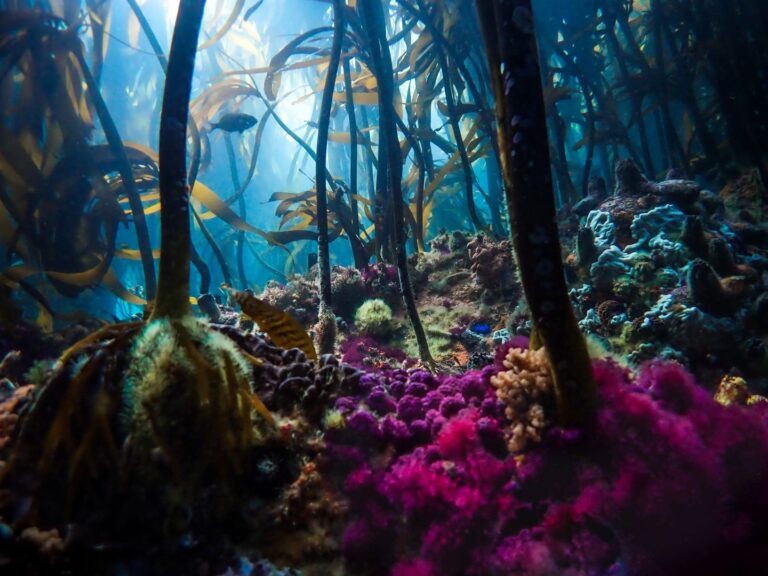
Kelp forests provide us with invaluable ecosystem services. They dampen the force of tides and surges, and slow currents by creating drag. This in turn reduces onshore wave action which prevents coastal erosion, protecting our shorelines.
Kelp forests are also economically significant. Kelps produce a substance called alginate which is extensively harvested for commercial use. Alginate is commonly used in the pharmaceutical and textile industry, in fertilisers, cosmetics and as a stabiliser for ice cream and beer and many other products. Kelps have a high nutritional value as they contain a wide range of vitamins and minerals.Kelp forests are also important culturally. Many coastal communities depend on the foraging and harvesting of kelp as a food source. Kelp forests also support artisanal and small-scale commercial fisheries as they are a nutrient rich ecosystem which serves as shelter for many commercially important species.
Their role in fighting the climate crisis
Kelp forests are being threatened by global warming. Rising sea temperatures weaken kelp tissue and hinders their growth making them more vulnerable. Moreover, as warmer waters invade these kelp forests, it also hinders the growth of their inhabitants. As a result, the population of sea urchins, which prey on kelps, grows unchecked as they are no longer predated upon. They devour the kelps and ravage these forests, creating urchin barrens. These urchins takeover can take decades to recover and with the rise in ocean temperatures, they might not be able to recover at all. Ocean acidification is also turning these kelp forests into uninhabitable ecosystems by making it difficult for hard shelled organisms to grow or repair their calcium carbonate shells and skeletons.
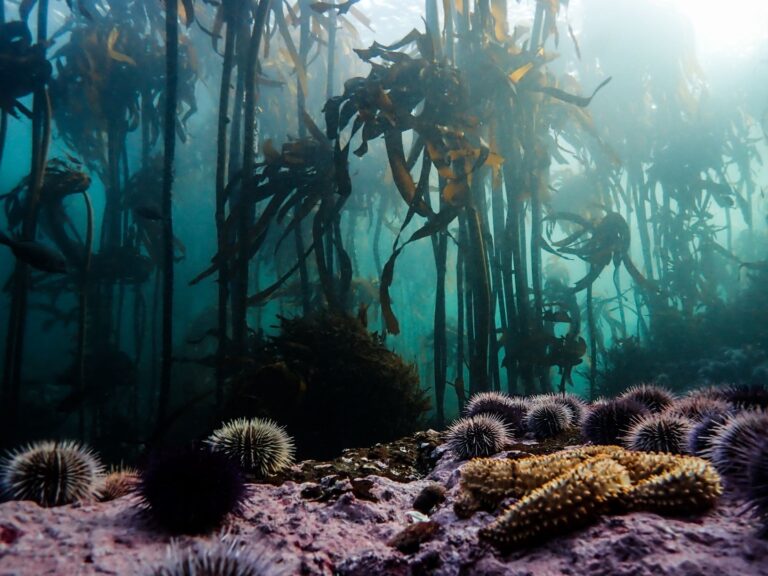
However, kelp forests are also vital in mitigating climate change. These ecosystems are some of the most efficient at carbon sequestration. Kelps absorb carbon dioxide from the atmosphere when they undergo photosynthesis. An estimated 4.4 to 8.7 million of tonnes of carbon dioxide is captured by kelp forests annually. Once the kelps die off, the detritus floats out to the open ocean where they remain mostly uneaten. Eventually, they sink into the deep sea, exporting all the dissolved carbon they absorbed into the deep-sea floor. In this way, carbon is sequestrated into the deep-sea sediment. A study in 2016 estimated that annually, macroalgae sequesters about 200 million tonnes of carbon dioxide which is the same amount of carbon that the state of New York emits each year. Kelp forests are also highly effective at fighting ocean acidification. By absorbing carbon dioxide, kelps maintain pH levels in the ocean at a steady level, making the water less acidic and more favourable for marine life.
Kelp forests are essential in the fight against climate change and to keep these ecosystems healthy, it is vital that countries around the world start taking actions to reduce carbon emissions drastically. As divers, we get to see the beauty and wonders of the underwater world first hand, but we also have the responsibility to protect and nurture it.
The wonders of Kelp Forest diving
Most divers associate kelp forest diving with surging green seas and feeling too cold and uncomfortable. But the privileged few who have been able to explore these enchanted sea forests know just how spectacular this seascape can be. The gentle sway of the kelp while hovering motionless gazing at nudis, making friends with sharks or playing with seals, makes diving in kelp forests a magical experience. Kelp forest diving means diving in cold water but once you submerge beneath the waves and descend into this mystical underwater forest, you will no longer worry about the cold but rather you’ll be in awe of the beauty and the exquisite marine life around you. Nudibranchs galore, schools of fish, shy sharks, pyjama sharks, the ever-elusive sevengill cow shark, seals, curious octopuses, rays and stunning jellies…Life in the kelp forests is buzzing.
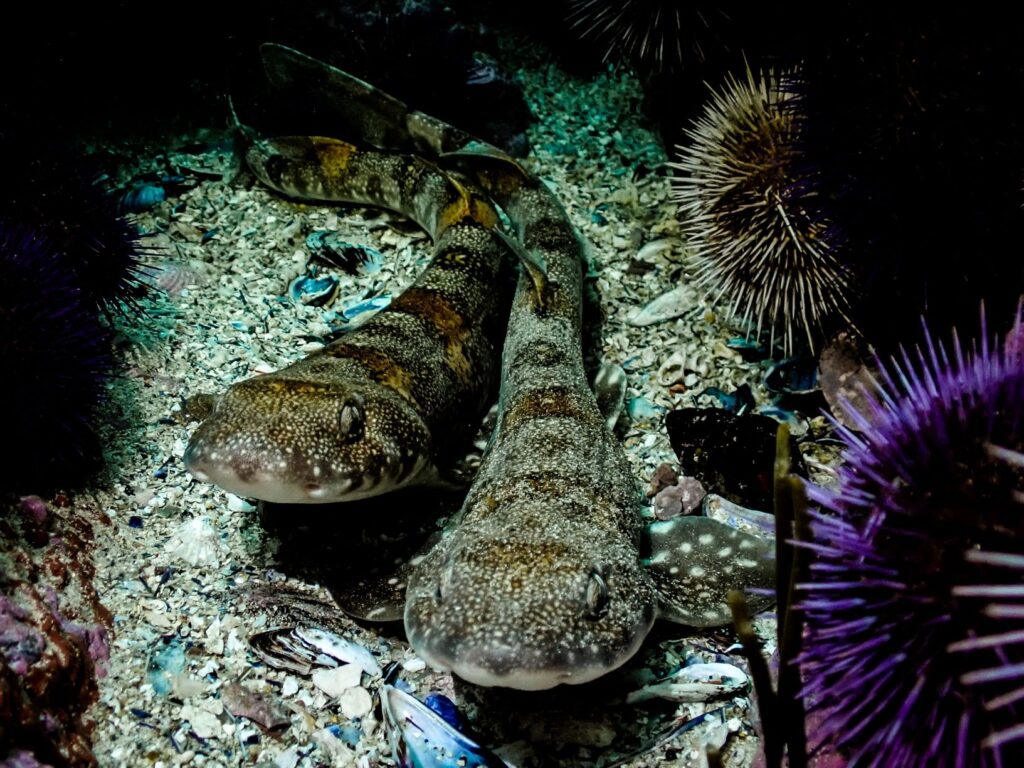

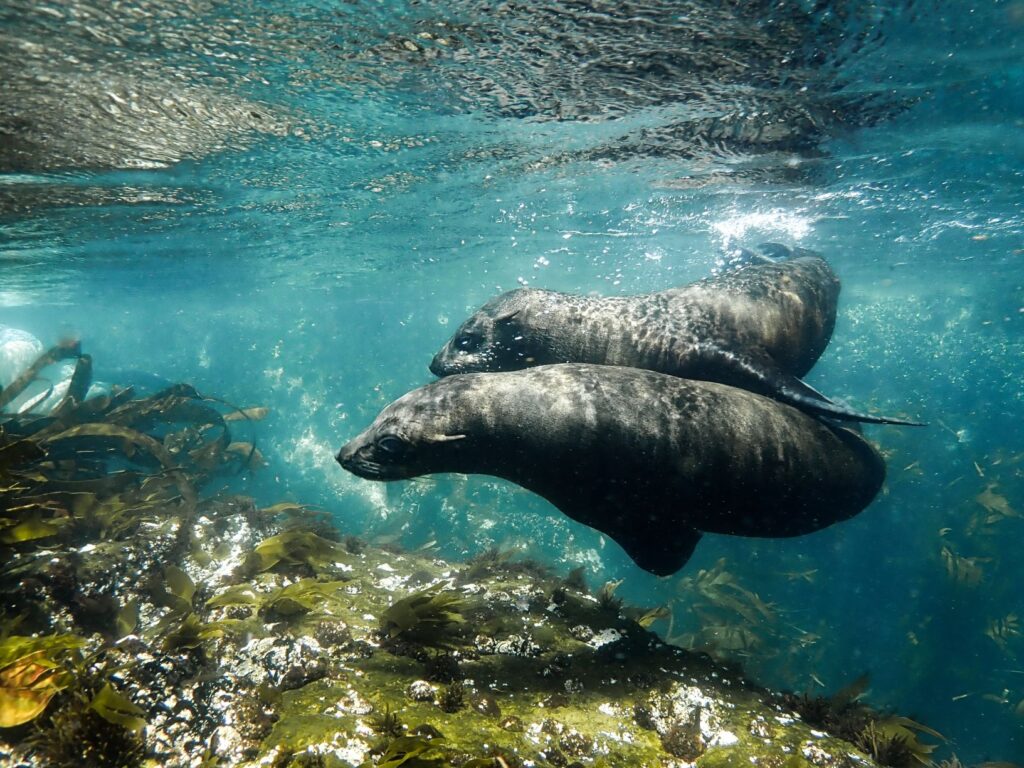
The fear of being too cold should not be the reason why you’re hesitant to dive in these magical underwater forests. There are many ways to deal with the cold. Layers are a great way to stay as warm and comfy as you can while diving. Here are some ideas of what you might need: a 5mm or 7mm wetsuit depending on how cold you get, a hood will make all the difference in the world and will keep you cosy so you can enjoy a long dive, neoprene boots and gloves for added layers of warmth. Once you’ve taken the plunge, you’ll be hooked and you’ll understand why these kelp forests need to be protected. Kelp forest diving is epic.
What can you do?
Here are some tips on how you can help the kelp forests.
- If you are lucky enough to be able to dive in kelp forests, try volunteering in citizen science initiatives and kelp restoration projects in your area.
- Consider donating to relevant organisations and groups that are actively involved in protecting kelp forests.
- Support sustainable kelp farming practises and try to include kelp in your diet
- Support groups and communities that are working towards climate action. Don’t be afraid to get political and call out corporations, engage with local reps and sign petitions tackling the climate emergency.
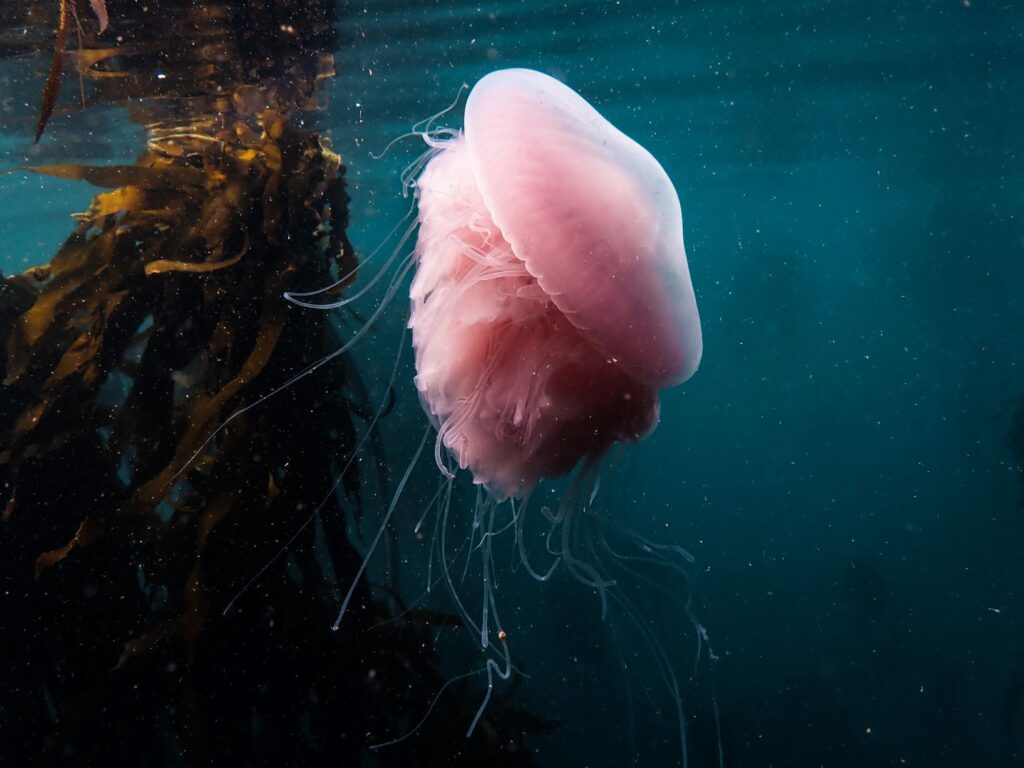
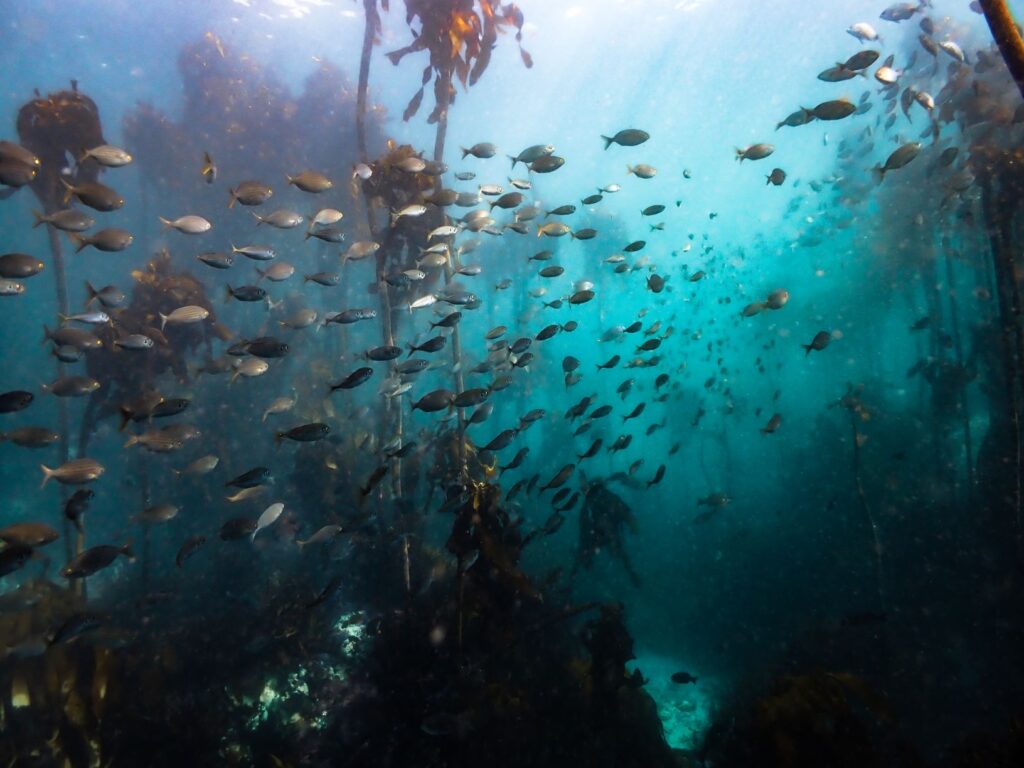

about the author
Sadiyah Rawat, originally from Mauritius, is an oceanographer, dive master and freediver. Her research interests are the effects of climate change on marine ecosystems, more specifically, the Antarctic Large Marine Ecosystem. She is a passionate ocean advocate, an avid hiker and loves beach walks.
